
The Sagrada Familia, an iconic symbol of Barcelona, is a breathtaking architectural wonder designed by the renowned Antoni Gaudí. With its intricate facades and stunning interiors, this basilica captures the imagination of visitors from around the world, inviting them to explore its unique blend of Gothic and Art Nouveau styles.
In this article, we invite you to discover the beauty and significance of this masterpiece through a virtual tour. Join us on this journey as we delve into the details of Sagrada Familia Barcelona: Embark on a Virtual Tour of Gaudí's Masterpiece, showcasing the artistry and vision that have made it a UNESCO World Heritage Site.
Discovering the Architectural Wonders of the Sagrada Familia
As you embark on your journey through the Sagrada Familia, prepare to be mesmerized by its architectural innovations. Gaudí's design is not merely structural; it reflects deep spiritual meanings and natural inspirations. Visitors will find elements that mimic the shapes and forms of nature, including:
- Column-like trees supporting the nave, enhancing the feeling of being in a forest
- Colorful stained glass windows that filter light in ways that evoke the changing hues of day
- Spiral towers representing the ascent to the heavens, each uniquely adorned
Each facade of the Sagrada Familia tells its own story, with intricate details that invite exploration and contemplation. The Passion Facade, for instance, starkly contrasts with the Nativity Facade. Here, visitors can witness:
- Emotional sculptures that depict Christ's suffering and sacrifice
- Naturalistic elements celebrating birth and life
One of the most remarkable aspects of this basilica is its ongoing construction, a testament to Gaudí's vision and dedication to craftsmanship. This continuous development allows visitors to witness the evolution of the design while appreciating techniques that blend traditional and modern approaches. As an architectural wonder, the Sagrada Familia showcases:
- Innovative use of materials such as stone and ceramics
- Advanced engineering methods that challenge conventional building practices
Beyond its stunning visuals, the Sagrada Familia embodies a profound narrative that resonates with many. Each visit is an opportunity to not only admire its beauty but also to reflect on the deeper messages it conveys about faith, nature, and the passage of time.
A Virtual Tour Experience: Exploring Gaudí's Vision for the Sagrada Familia
As you embark on a virtual tour of the Sagrada Familia, you will find yourself immersed in Gaudí's profound vision. Each element of the basilica, from its soaring towers to its intricate facades, serves as a testament to his creative genius. A virtual experience allows you to explore these elements in detail, highlighting both the artistic and spiritual aspects that define this masterpiece. Through high-resolution imagery and interactive features, you can navigate the various sections and appreciate the meticulous craftsmanship that brings Gaudí's vision to life.
During the tour, you will encounter various architectural highlights that showcase Gaudí's unique approach. Some of the most captivating features include:
- Hyperboloid structures that provide stability and beauty to the overall design
- Natural lighting effects created by strategically placed windows
- Symbolic motifs that reflect the story of Christianity and nature
The virtual journey also emphasizes the innovative construction techniques employed in the Sagrada Familia. Visitors can learn about the integration of traditional craftsmanship with modern technology, which not only respects Gaudí's original plans but also adapts them for contemporary building standards. Key aspects include:
- Use of 3D modeling to visualize complex structures before construction
- Sustainable practices that minimize environmental impact
- Collaborative efforts involving artisans and engineers from around the world
Ultimately, a virtual tour of the Sagrada Familia is more than just a visual experience; it’s an opportunity to connect with Gaudí's legacy on a deeper level. Each moment spent exploring this architectural wonder encourages reflection on themes of spirituality, nature, and the enduring power of human creativity. Whether you are a seasoned visitor or discovering it for the first time, this digital journey promises to inspire and enlighten.
The History Behind the Sagrada Familia: A Journey Through Time
The history of the Sagrada Familia is as captivating as the basilica itself. Construction began in 1882 under architect Francisco de Paula del Villar, but it was Gaudí who transformed the project into a monumental vision. His dedication to the site was unwavering, and he famously stated, "My client is in no hurry," referring to God. This belief led to a slow yet profound evolution of the design over the decades.
Throughout its history, the Sagrada Familia has faced numerous challenges, including the Spanish Civil War, which halted construction and resulted in the loss of many of Gaudí's original plans. Despite these setbacks, the project resumed in the 1950s, fueled by a growing recognition of its cultural significance. Key milestones in its history include:
- Completion of the Nativity Facade in 1935, showcasing Gaudí's imaginative approach to life and birth.
- Construction of the Passion Facade, which reflects a more somber and stark aesthetic, completed in the early 2000s.
- The goal of completion by 2026, marking the centenary of Gaudí's death, showcases the ongoing commitment to his vision.
As the Sagrada Familia's construction continues, it has become a symbol of resilience and faith. The fusion of Gothic and Art Nouveau styles represents not only Gaudí's genius but also the collaborative efforts of countless artisans and architects who have contributed to its realization over the years. This ongoing journey through time is a testament to the enduring power of creativity and spirituality.
In addition to its architectural beauty, the Sagrada Familia serves as a cultural hub. It attracts millions of visitors each year, all eager to experience its history and significance. The basilica is also a reminder of the importance of preserving artistic heritage for future generations, ensuring that Gaudí's masterpiece remains a beacon of inspiration for years to come.
Symbolism in the Sagrada Familia: Unveiling Gaudí's Artistic Intentions
The Sagrada Familia is not just an architectural feat; it is a rich tapestry of symbolism woven into its very fabric. Gaudí meticulously infused the basilica with spiritual meanings, drawing inspiration from nature and Christian teachings. Each element serves a purpose, reflecting both his artistic intentions and his deeply held beliefs. For example, the use of light in the structure symbolizes the divine presence, illuminating sacred spaces and guiding visitors through their spiritual journey.
One of the most profound symbols in the Sagrada Familia is the three grand facades, each representing a crucial aspect of Christ’s life: the Nativity, Passion, and Glory. These facades encapsulate the story of redemption and the divine journey from birth to resurrection. Visitors can observe:
- Life and joy in the Nativity Facade, celebrating the birth of Jesus
- Suffering and sacrifice portrayed in the Passion Facade, telling the story of Christ’s crucifixion
- Hope and glory depicted in the Glory Facade, envisioned as a celebration of the eternal life
Gaudí's innovative architectural language also incorporates natural forms that echo the structure of trees and mountains, reinforcing the connection between spirituality and the natural world. This design not only enhances the visual experience but also invokes a sense of serenity and contemplation. The columns branching out like trees foster an environment that feels alive, encouraging visitors to reflect on their place within both nature and faith.
In conclusion, the symbolism embedded within the Sagrada Familia reveals Gaudí's profound artistic intentions, making it an endless source of inspiration. As visitors explore the intricacies of the basilica, they are invited to ponder the deeper themes of faith, nature, and human creativity. This masterpiece stands as a testament to the idea that architecture can transcend mere functionality, becoming a vessel for spiritual and emotional exploration.
Tips for an Immersive Virtual Tour of the Sagrada Familia
To make the most of your virtual tour of the Sagrada Familia, consider setting the right atmosphere. Create a quiet and comfortable space where you can fully immerse yourself in the experience. Using high-quality headphones will enhance the audio narration, allowing you to appreciate the sounds of the basilica's environment, including the echoes of footsteps and the soft whispers of visitors. Make sure to adjust your screen settings for optimal brightness to truly appreciate the vibrant stained glass and intricate details.
Another tip is to take your time while exploring each section. The Sagrada Familia is rich with stories and meanings, so don't rush through the tour. Pause at key features, such as the Nativity and Passion facades, to absorb their unique artistry. You can also use a note-taking app or a physical journal to jot down thoughts or interesting facts, which can deepen your understanding of Gaudí's artistic vision and the basilica’s significance.
Incorporating interactive elements can further enhance your virtual experience. Look for virtual tours that allow you to navigate through the basilica at your own pace, providing zoom options to closely examine sculptures and architectural details. Engaging with these features can reveal hidden aspects of Gaudí's design, such as:
- Symbolic motifs that intertwine with Christian themes
- Techniques used in stained glass that create a mesmerizing play of light
- Architectural innovations that highlight Gaudí's genius
Finally, consider joining online discussions or forums after your virtual tour. Sharing insights with others who have experienced the same journey can expand your perspective and enhance your appreciation of the Sagrada Familia. Engaging in conversations about the architectural styles or specific artistic elements can lead to a richer understanding of Gaudí's masterpiece, reinforcing its status as a true symbol of Barcelona.
The Impact of the Sagrada Familia on Modern Architecture and Tourism
The impact of the Sagrada Familia on modern architecture is profound, as it embodies a unique blend of Gothic and Art Nouveau styles that continues to influence contemporary designs. Architects around the world draw inspiration from Gaudí's organic forms and intricate details, often incorporating elements that mimic nature. This basilica has set a benchmark for integrating spirituality and artistry in architectural projects, encouraging innovations such as:
- Fluid structural designs that challenge conventional geometry
- Use of sustainable materials that respect the environment
- Advanced engineering techniques that push the boundaries of construction
In addition to its architectural significance, the Sagrada Familia has become a major tourist attraction, drawing millions of visitors annually. This influx not only boosts local economies but also promotes cultural exchange. The basilica’s iconic status has sparked interest in other architectural wonders, leading to a surge in tourism connected to heritage sites. Visitors are often captivated by:
- Guided tours that provide in-depth explorations of its artistic elements
- Workshops that engage attendees in Gaudí's techniques and philosophies
- Virtual experiences that allow global audiences to appreciate its beauty from afar
The Sagrada Familia's ongoing construction serves as a compelling narrative of resilience and dedication to artistic vision. This continuous evolution not only captivates visitors but also invites discussions on the role of tradition versus innovation in architecture. Observers can witness:
- The melding of historical styles with modern interpretations
- Community involvement in promoting and preserving Gaudí’s legacy
- Shifts in construction methods that reflect contemporary values and technologies
Ultimately, the Sagrada Familia stands as a powerful symbol of the harmony between architecture and tourism. Its presence enhances Barcelona’s cultural landscape, promoting a deeper understanding of human creativity and spirituality in urban environments. As both a masterpiece and a tourist destination, it continues to inspire future generations of architects and travelers alike.
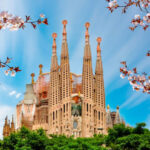 The Address of Sagrada Familia in Barcelona:
The Address of Sagrada Familia in Barcelona: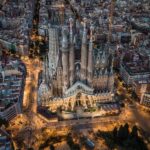 Sagrada Familia Barcelona: A Breathtaking Aerial View
Sagrada Familia Barcelona: A Breathtaking Aerial ViewIf you want to know other articles similar to Sagrada Familia Barcelona: Embark on a Virtual Tour of Gaudí's Masterpiece you can visit the category WHERE YOU CAN GO.
Leave a Reply


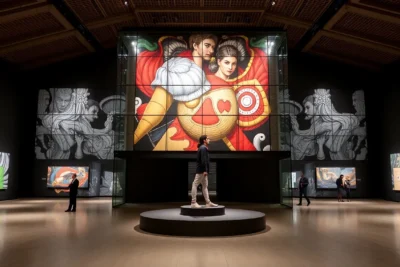
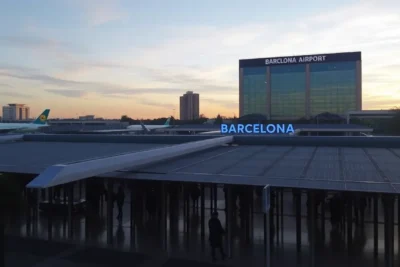

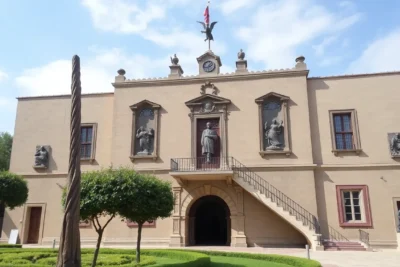

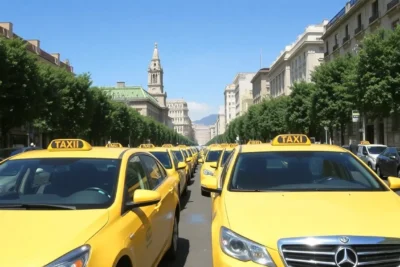
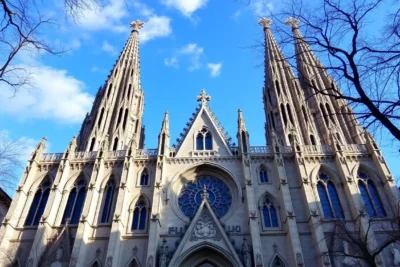

Read more!